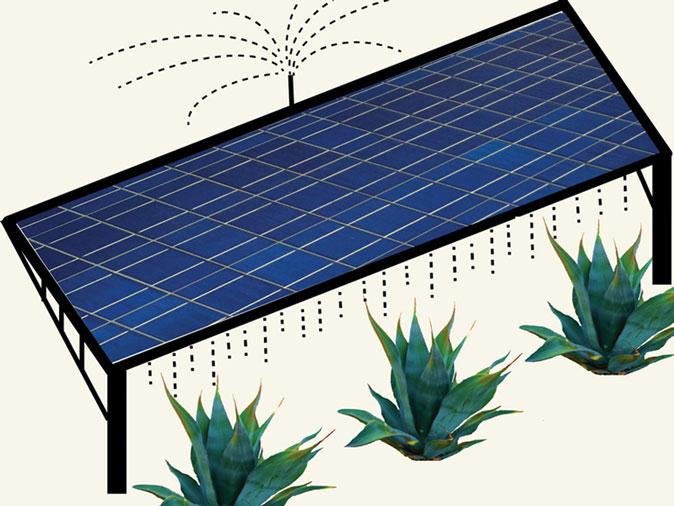Growing carefully chosen plants like agave amid photovoltaic panels could allow solar farms to not only collect sunlight for electricity but also to produce crops for biofuels, new computer models suggest.
This co-location approach could prove especially useful in sunny, arid regions such as the southwestern United States where water is scarce, says Sujith Ravi, who is conducting postdoctoral research with David Lobell and Chris Field, both professors in environmental Earth system science at Stanford University.
“Co-located solar-biofuel systems could be a novel strategy for generating two forms of energy from uncultivable lands: electricity from solar infrastructure and easily transportable liquid fuel from biofuel cultivation,” says Ravi, lead author of a new study in Environmental Science & Technology.
Photovoltaic (PV) solar farms run on sunlight, but water is required to remove dust and dirt from the panels to ensure they operate at maximum efficiency. Water is also used to dampen the ground to prevent the buildup and spread of dust.
Crops planted beneath the solar panels would capture the runoff water used for cleaning the PV panels, thus helping to optimize the land. The plants’ roots would also help anchor the soil and their foliage would help reduce the ability of wind to kick up dust.
Computer simulations of a hypothetical co-location solar farm in Southern California’s San Bernardino County suggest that these two factors together could lead to a reduction in the overall amount of water that solar farms need to operate.
Agave Is Ideal
“It could be a win-win situation,” Ravi says. “Water is already limited in many areas and could be a major constraint in the future. This approach could allow us to produce energy and agriculture with the same water.”
But which crops to use? Many solar farms operate in sunny but arid regions that are inhospitable to most food crops. But there is one valuable plant that thrives at high temperatures and in poor soil: agave.
Native to North and South America, the prickly plant can be used to produce liquid ethanol, a biofuel that can be mixed with gasoline or used to power ethanol vehicles. “Unlike corn or other grains, most of the agave plant can be converted to ethanol,” Ravi says.
The team plans to test the co-location approach around the world to determine the ideal plants to use and to gather realistic estimates for crop yield and economic incentives.
The TomKat Center for Sustainable Energy at Stanford supported the research.
Source: Stanford University. Republished from Futurity.org under Creative Commons License 3.0.




